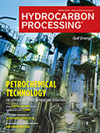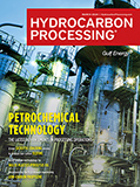Environment & Safety
Optimizing combustion processes for safety and efficiency
Combustion processes are critical for producing heat and power in nearly every industry.
Nine steps for effective preparation of planned shutdowns—Part 1
Planned shutdowns (SDs) are critical events that can significantly impact production and expenditures. Poor planning and preparation can directly affect the success of any SD, making attention to detail imperative.
Two diverted oil tankers enter Red Sea but disruptions continue
Two oil tankers that had diverted away from the Red Sea have turned back and passed through the Bab al-Mandab Strait, ship-tracking data shows, though tensions in the region continued to disrupt global shipping and trade.
Russia's Ryazan oil refinery reports fire, no injuries
A fire tore through Ryazan oil refinery, Russia's third-largest, the Komsomolskaya Pravda newspaper said, quoting emergency services.
Thailand orders traders to suspend diesel exports
Thailand has ordered traders to suspend diesel exports while Thai Oil Plc repairs its No. 3 crude distillation unit in Chonburi province.
More oil tankers shun southern Red Sea after U.S.-led strikes in Yemen
At least six more oil tankers were steering clear of the southern Red Sea, as disruptions on the vital route for energy shipping increase in the wake of U.S.-led strikes against Houthi targets in Yemen.
Russia's NORSI refinery may halve high-octane gasoline output after outages
Lukoil's NORSI oil refinery in Nizhny Novgorod may halve high-octane gasoline output after an emergency stoppage at one of two plant's catalytic cracking unit.
Thai Oil to shut crude unit for repairs at Sriracha refinery
Thai Oil is planning to shut one of the three crude distillation units at its Sriracha refinery complex for repairs after production issues cropped up early last week.
Protesters in Libya threaten to shut down oil and gas facilities
Protesters have threatened to shut down two oil and gas facilities near the Libyan capital Tripoli, with one group that is campaigning against corruption issuing a 72-hour ultimatum.
Oil tankers divert from Red Sea after U.S., UK strikes in Yemen
At least four oil tankers have diverted course from the Red Sea since overnight strikes by the U.S. and Britain on Houthi targets in Yemen, shipping data from LSEG and Kpler showed.

- China's March jet fuel exports jump 77.4% from a year earlier 4/18
- Nigeria strikes deal with Shell to supply $3.8-B methanol project 4/18
- Singapore fuel oil stockpiles rebound to 8-week high on higher imports 4/18
- Clariant launches new CATOFIN 312 propane dehydrogenation catalyst 4/18
- Solvay inaugurates new blowing agent production unit in Rosignano, Italy 4/18
- Meridian Energy Group’s Davis Refinery Project in North Dakota (U.S.) will be the world’s first net-zero carbon refinery 4/17




